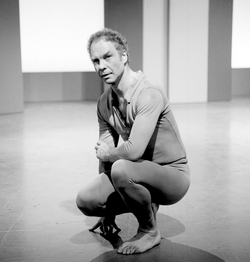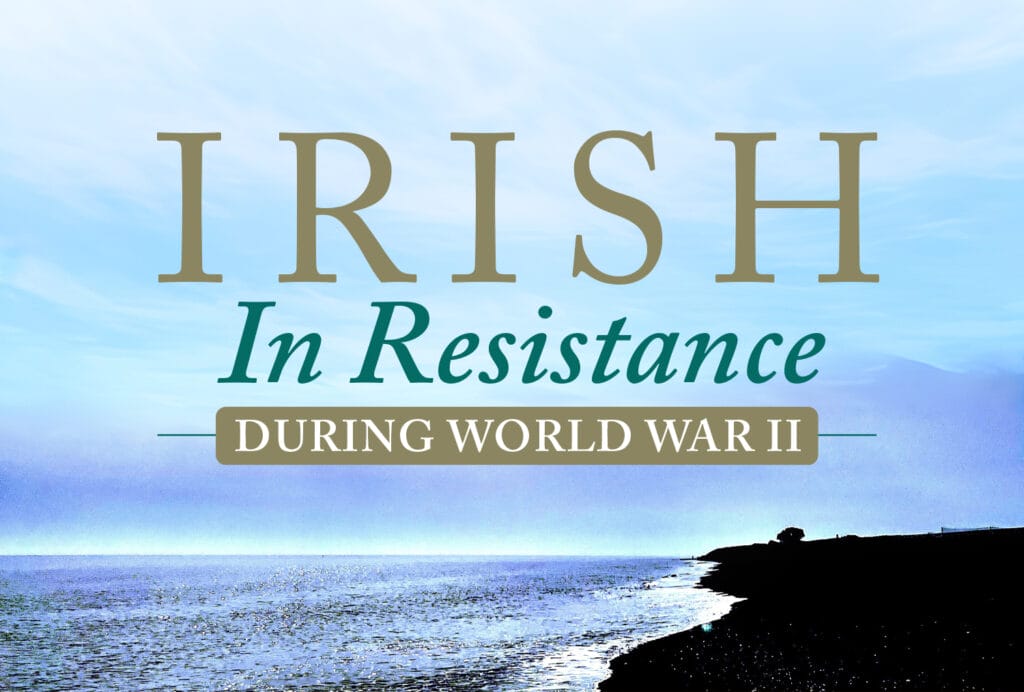
Men in Motion – a trio of athletic and hilarious dance pieces presented by Irish Modern Dance Theatre

Men in Motion – a trio of athletic and hilarious dance pieces presented by Irish Modern Dance Theatre
October 16 @ 7:00 pm – 8:00 pm IST
MEN IN MOTION is an evening of three athletic and hilarious dance pieces, earning rave reviews and standing ovations in the Abbey, Edinburgh Fringe and New York, presented by Irish Modern Dance Theatre on tour to Ballina Arts Centre, Mayo; Wexford Arts Centre, Wexford, and Ramor Arts Centre, Cavan. Artists include John Scott, choreographer and dancer, Boris Charrion, dancer and Vini Martins Araujo, dancer.
Book Your Place
Tickets €18/€15, book here
Artists
Merce Cunningham, choreographer
John Scott, choreographer and dancer
Boris Charrion, dancer
Vini Martins Araujo, dancer
Full Event Details
MEN IN MOTION is an evening of three athletic and hilarious dance pieces, earning rave reviews and standing ovations in the Abbey, Edinburgh Fringe and New York, presented by Irish Modern Dance Theatre. The central work is iconic American Choreographer, Merce Cunningham’s stunning ‘Solo’ followed by firm favourite ACTIONS – a sweeping, vigorous duet by French dance sensation, Boris Charrion and acclaimed Brazilian dancer Vini Martins Araujo. John Scott’s Beckett-like Bowing Dance, completes a programme brimming with energy and adventure.
Solo – Merce Cunningham
“Its lunging jumps and scurrying steps appear shockingly wild … highlight the lasting beauty of Cunningham’s movement language. …. always articulated in a crystal-clear vocabulary”
Michael Seaver, The Irish Times
The Bowing Dance
“the work can feel like a brilliant piece of absurdist theater, a meditation on identity, an entry-level primer on choreographic composition or nothing very much at all. Perhaps it’s all those things at once, which is to say, art”
Roslyn Sulcas, New York Times
Actions
“within the choreography Scott has managed to blend quick-fire immediacy with slow-burning intellect. ….. there is a satisfying completeness to the dance”
Michael Seaver, The Irish Times
“vibrant and witty”
Donald Hutera, The Times, London
“Daring physical feats? Check. Competitiveness? Check. Underlying, shrugged-off affection? Check…… vigorous, sweeping, canted, giant-step, high-kick movements that Scott’s choreography favors ……. It’s wonderfully enjoyable, skillfully paced, and full of small surprises….. In its own way, Actions tells us much about affability under pressure, diligence, and a feistiness that doesn’t negate the men’s respect for each other”
Deborah Jowitt, The Village Voice, New York
Irish Modern Dance Theatre
Founded in 1991 by dancer and choreographer John Scott, Irish Modern Dance Theatre is one of the most original and responsive dance companies working in Ireland today. A Dublin-based ensemble, Scott and international guest choreographers create distinctive dance works with diverse casts, mixing virtuosic Irish and international dancers with African and Middle Eastern refugees and torture survivors. Our works include ‘Lear’, ‘Inventions’, Actions’ and ‘Fall and Recover’ – all recognised for their intelligence, honesty and humanity. Our work crosses disciplines, subverts expectations of dance and dancers and finds new ways to explore contemporary issues. Irish Modern Dance Theatre is Strategically funded by the Arts Council.
Speaker Biographies:

John Scott is a Dublin born choreographer, performer, founder and Artistic Director of Irish Modern Dance Theatre, founder and Artistic Director of Dancer from the Dance Festival, and a member of Aosdána. He studied and performed at Irish National College of Dance/Dublin City Ballet from 1982 to 1985 in works by Anton Dolin, Anna Sokolow, Pearl Gaden and Babil Gandara.
His choreographic works include Divine Madness, Inventions, Cloud Study, Everything Now, Lear, Fall and Recover, and Actions. His work has been presented at Dublin Dance Festival, Galway International Arts Festival, Kilkenny Arts Festival, Dublin Fringe Festival and internationally at John F Kennedy Centre, Washington DC, New York Live Arts, La MaMa, Danspace Project at St Mark’s Church, PS 122, New York and Dance Base, Edinburgh; Sounded Bodies Festival; Queer Zagreb, Croatia; Les Hivernales, Avignon; Tanzmesse Dusseldorf; and Forum Cultural Mundial, Brazil. He danced in Oona Doherty’s Hard to be Soft, Meredith Monk’s Quarry (Spoleto Festival) and for Yoshiko Chuma, Sarah Rudner, Anna Sokolow and Thomas Lehmen. He has collaborated with Pan Pan on Beckett’s QUAD.
John was awarded African Refugee Network’s Culture Award for his work with Refugees and Survivors of Torture and is a subject of Sadlers Wells’ 52 Portraits by Jonathan Burrows, Matteo Fargion and Hugo Glendinning. He has taught dance and choreography at the Irish World Academy, University of Limerick; The Body in Performance, Drama Department, UCD; Drama Department NUIG; Drexel University, Philadelphia; University of Colorado at Boulder, USA and San Jose State University, CA, USA. He was a founding board member of Dublin Dance Festival and Dance Ireland.

Merce Cunningham (1919-2009) is widely considered to be one of the most important choreographers of all time. His approach to performance was ground breaking in its ideological simplicity and physical complexity: he applied the idea that “a thing is just that thing” to choreography, embracing the notion that “if the dancer dances, everything is there.” He also once said, “Dance is most deeply concerned with each single instant as it comes along, and its life and vigor and attraction lie in just that singleness. It is as accurate and impermanent as breathing.”
Born in Centralia, Washington on April 16, 1919, Cunningham began dancing at a young age. At the Cornish School he first encountered the work of Martha Graham, who would later invite him to join her company in New York; Cunningham had a six-year tenure as a soloist with the Martha Graham Dance Company. It was also at Cornish that Cunningham first met John Cage, who would become the greatest influence on his practice, his closest collaborator, and his life partner until Cage’s death in 1992. The first show that included only Cunningham dances, a series of six solos with music by Cage, took place in 1944. Four years later, Cunningham and Cage began a relationship with the famed experimental institution Black Mountain College, where, in 1952, Cunningham, along with Robert Rauschenberg, David Tudor, M.C. Richards, and Charles Olson, joined Cage in creating what is often considered the first “Happening.” Also at Black Mountain, in 1953, Cunningham first formed a dance company to explore his convention-breaking ideas. The Merce Cunningham Dance Company (originally called Merce Cunningham and Dance Company) would remain in continuous operation until 2011, with Cunningham as Artistic Director until his death in 2009. In 1971, Cunningham and his company became original tenants in Westbeth Artist Housing, remaining in residence there, along with his studio and school, until the company’s dissolution. Over the course of his career, Cunningham choreographed 190 dances and over 700 “Events.”
Cunningham once wrote, “My work has always been in process. I do not think of each dance as an object, rather a short stop on the way.” He has described four seminal events that led to large discoveries, the first two of which came from his work with John Cage. Starting with their early collaborations in the 1940s, Cage and Cunningham began to propose a number of radical innovations, the first being the controversial idea that dance and music can occur in the same time and space but be created independently of one another. This separation gave Cunningham “a feeling of freedom for the dance, not a dependence upon the note-by-note procedure.” A second leap for Cunningham and Cage was the use of chance operations, a revolutionary form of decision-making in choreography (and, in the case of Cage, music) where Cunningham applied chance operations to determine elements of the choreography such as the continuity, rhythm, timing, number of dancers, and use of space. The use of chance operations led to new discoveries, “presenting almost constantly situations in which the imagination is challenged.”
Cunningham’s lifelong passion for exploration and innovation made him a leader in applying new technologies to the arts. He credited his work in film in the 1970s as another key inflection point: tapping into the potentials provided by the mobility of the camera, the ability to cut and thereby alter size and rhythm, and the highlighting of specific body parts otherwise far less obvious given the distance of the viewer to the stage. In his 70s, Cunningham continued to experiment, using the computer software DanceForms to explore movement possibilities before setting them on dancers. He continued to find ways to integrate technology and dance: he explored motion-capture technology to create décor for Hand Drawn Spaces (1998), BIPED (1999), Loops (2000), and Fluid Canvas (2002). His interest in new media led to the creation of Mondays with Merce, the webcast series that provides a behind-the-scenes look at Cunningham’s and his company’s teaching and rehearsal process.
With long-term collaborations with artists like Robert Rauschenberg (who contributed various design elements to over 20 of Cunningham’s dances—sometimes even creating his work onstage in “realtime” during the dance), Jasper Johns, Charles Atlas, and Elliot Caplan (rethinking the way choreography and dancing bodies could be captured on film), Cunningham’s sphere of influence extended deep into the visual arts world. In 2017, the Walker Art Center retrospective Merce Cunningham: Common Time, (also at the Museum of Contemporary Art Chicago), investigated the unique working methods, profound relationships, and influence of Cunningham, featuring works from artists like Tacita Dean, Morris Graves, Robert Morris, Bruce Nauman, Isamu Noguchi, Yoko Ono, Nam June Paik, Carolee Schneemann, Frank Stella, Stan VanDerBeek, and Andy Warhol.
An active choreographer and mentor to the arts world until his death at the age of 90, Cunningham earned some of the highest honors bestowed in the arts. Among his many awards are the National Medal of Arts (1990) and the MacArthur Fellowship (1985). He also received the Jacob’s Pillow Dance Award in 2009, Japan’s Praemium Imperiale in 2005, the British Laurence Olivier Award in 1985, and he was named Officier of the Legion d’Honneur in France in 2004. Cunningham’s life and artistic vision have been the subject of several books and numerous major exhibitions, and his dances have been performed by groups including the Paris Opera Ballet, New York City Ballet, American Ballet Theatre, White Oak Dance Project, the Lyon Opera Ballet, Ballett am Rhein, and London’s Rambert, to name a few.
Cunningham died in his New York City home on July 26, 2009. Always forward-thinking, he oversaw the development of a precedent-setting Legacy Plan prior to his death, to guide his Company and ensure the preservation of his artistic legacy. Through the Merce Cunningham Trust, his vision continues to live on, regenerated time and time again through new bodies and minds.
Organisations Involved / Partner Organisation(s):



